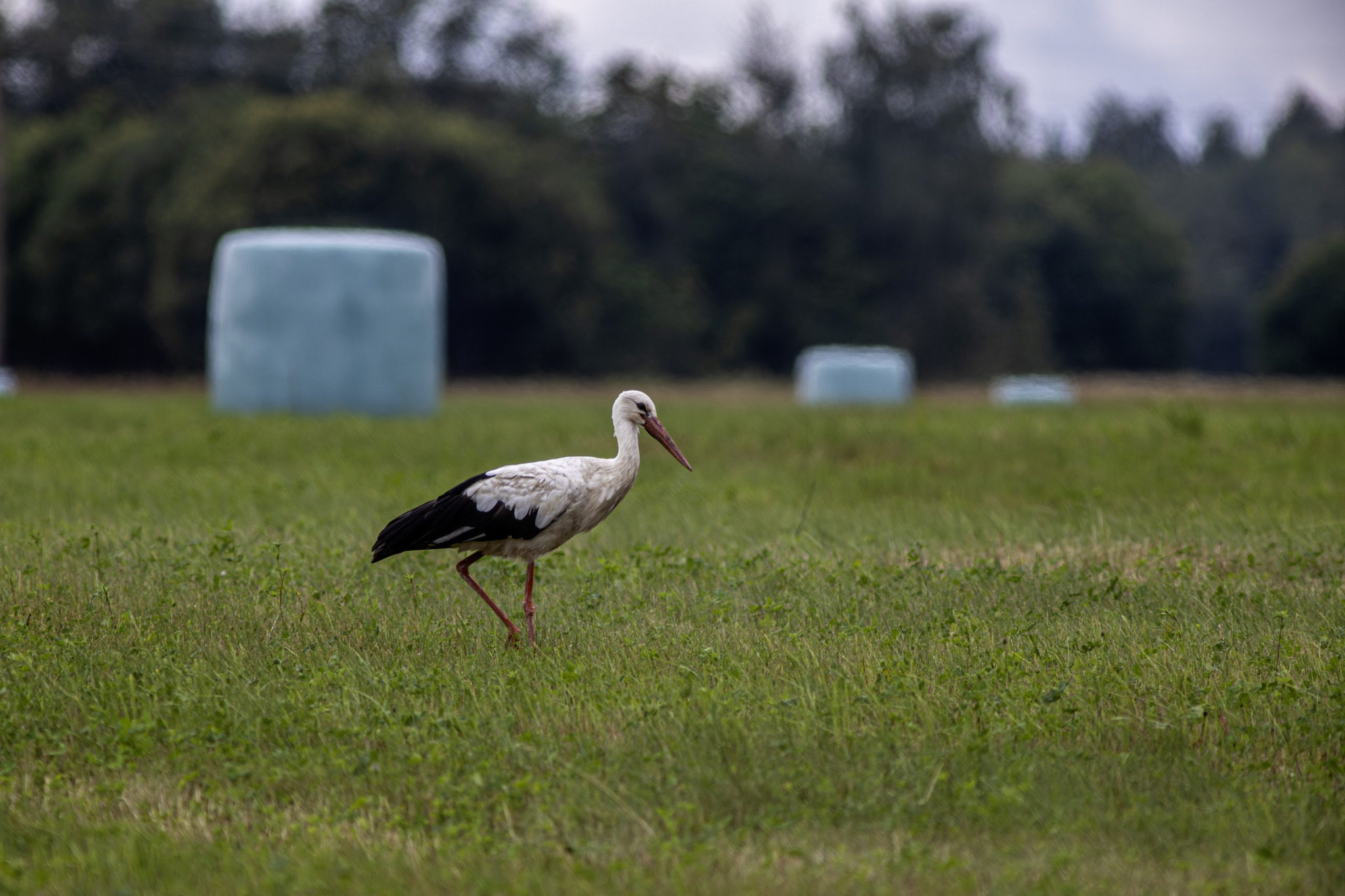The White Stork (Ciconia ciconia) is a large, charismatic bird known for its distinctive appearance and long-distance migratory behavior. This species holds cultural significance in many regions and is often associated with good luck and fertility.
Description
- Appearance:
- Adults: White Storks have predominantly white plumage with contrasting black flight feathers and wing coverts. They possess long, red legs and a long, pointed red bill.
- Size: They stand about 100-115 centimeters tall, with a wingspan ranging from 155 to 215 centimeters.
- Sexes: Both males and females look similar, although males are generally slightly larger.
Habitat
- Distribution: The White Stork is found across Europe, parts of North Africa, and western Asia. They migrate to sub-Saharan Africa and the Indian subcontinent during the winter.
- Preferred Environment: These birds favor open wetlands, agricultural fields, grasslands, and meadows. They are often seen near human settlements, nesting on buildings, poles, and specially erected platforms.
Behavior and Ecology
- Migration: White Storks are known for their long-distance migrations. European storks typically migrate to Africa, crossing the Mediterranean Sea and the Sahara Desert. They use thermal currents to soar, which conserves energy during their migration.
- Diet: Their diet is varied and includes insects, amphibians, reptiles, small mammals, birds, and occasionally fish. They forage in wetlands and agricultural areas.
- Breeding:
- Nesting: White Storks build large nests from sticks, often reused and added to each year. Nests are typically located in elevated sites, such as trees, rooftops, and utility poles.
- Reproduction: Females lay 3-5 eggs, which both parents incubate for about 33-34 days. Chicks are cared for by both parents and fledge approximately 58-64 days after hatching.
Conservation
- Status: The White Stork is currently listed as “Least Concern” by the IUCN, thanks to conservation efforts and its wide distribution. However, it faces threats from habitat loss, pollution, and collisions with power lines.
- Conservation Efforts: Efforts include protecting wetlands, creating artificial nesting sites, and implementing measures to reduce collision risks with power lines. Public awareness campaigns also play a role in their conservation.
Observing White Storks
- Best Times: The best time to observe White Storks in Europe is during the breeding season (spring and summer). In their wintering grounds in Africa, they can be seen during the northern hemisphere’s winter months.
- Watching Tips: Look for them in open habitats, such as wetlands and agricultural fields. They are also commonly seen nesting on buildings and utility poles in rural and suburban areas.
Interesting Facts
- Cultural Significance: The White Stork is a symbol of good luck and fertility in many cultures. In European folklore, they are famously believed to deliver babies to new parents.
- Migration Routes: White Storks typically use two main migration routes: the western route through the Strait of Gibraltar into West Africa and the eastern route through the Bosphorus into East Africa.
- Vocalizations: White Storks are generally silent but communicate through bill-clattering, especially during courtship and at the nest.
Summary
The White Stork (Ciconia ciconia) is an iconic bird renowned for its striking appearance, cultural significance, and impressive migratory journeys. Its presence in a region often symbolizes a healthy ecosystem, particularly in wetland and agricultural landscapes. Conservation efforts continue to support the populations of this magnificent bird, ensuring that it remains a common and cherished sight in many parts of the world.
Visited 739 times, 35 visit(s) today
Views: 1147
Subscribe to the newsletter:
